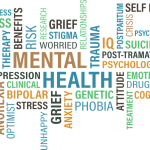Mental Health in the Social Media Age

Australia used to be known as ‘The Lucky Country’ – with affordable housing and education, employment security, a high standard of living and optimism for the future.
Nowadays, many are racked by pessimism, boredom and hopelessness for what the future may hold.
Reports of mental health problems are at all-time highs, with most experts believing the figures are still vastly under-reported.
Our youth are attempting or committing suicide at unprecedented rates, citing social pressures and a bleak future outlook.
In an alarming snapshot, seven out of 10 university students recently surveyed by the National Union of Students rated their mental health as only “poor or fair”.
In the same survey of more than 2600 Australian University and TAFE students, about a third reported considering self-harm or suicide in the past 12 months.
The survey also found that two-thirds reported “high or very high” psychological distress, almost 80 per cent felt anxious, and more than half had experienced panic.
It’s a bleak picture. These young people are the so called ‘privileged ones’ – those who are actually getting a tertiary education and who should be looking forward to an exciting future which presents them with possibilities and choices.
We know that by contrast, young people from poorer and disadvantaged backgrounds often fair a lot worse, often turning to crime as a means of escape.
We have reported previously on the effect of the systemic exclusion from society. Mental health service Orygen has found Aboriginal and Torres Strait Islander youth, and youth in regional and remote Australia, are most at risk of mental health problems.
LGBTIQ youth are also seriously at high risk. The statistics from Orygen, released at the end of last year, suggest that suicide rates amongst those aged 15 to 24 are at the highest they’ve been in 10 years. The research also found that:
- A third of all deaths of young men are due to suicide,
- 41,000 young people aged 12 to 17 have made a suicide attempt,
- Suicide rates have increased for children under the age of 14, and
- One-quarter of women aged 16 to 17 have self-harmed.
While family life, self-esteem, health, drugs and alcohol, and future prospects all contribute to hopelessness, one of the largest contributing factors is peer pressure. We tend to associate suicide with ‘loners’, but when it comes to our youth, suicide can occur in clusters.
In one cluster that was identified by Orygen, 21 young people had taken their lives in a remote town in central Queensland between 2010 and 2012. And fifteen young people died by suicide in a remote northern West Australian town in the same time period.
Internet, globalisation and technology
The proliferation of social media is also said to be contributing to the unhappiness of our young people, who feel overwhelmed by the constant bombardment of negative information about global news and events, politics and climate change, and feel powerless to effect change on these issues which they see as a critical threat to their future.
There’s also an enormous amount of pressure to look the part in the era of selfies and self-promotion, while at the same time being easier for bullies to attack and demean their chosen targets.
Facebook celebrates its 13th birthday this year, and behavioural experts are starting to build a bank of internationally-based data around the long term effects of social media.
Numerous studies undertaken around the world have reached similar conclusions, suggesting that being inundated with photos and posts depicting other people’s seemingly perfect lives can induce feelings of envy and lead to unrealistic social comparisons which in turn, affect mood and feelings of well-being. The bombardment can even lead to depression and anti-social behaviour, which can in turn lead to crime, self harm and even suicide.
Role of adults
There’s no doubt that our children are inheriting a world that is vastly different from anything we’ve experienced before, and many believe it is our job to ensure they are supported in developing appropriate coping mechanisms.
It has long been said that mental health is underfunded in Australia, but it’s not just about funding – new problems need new thinking and new solutions. If we don’t support our young people, they are at greater risk of developing mental health issues and associated problems.








